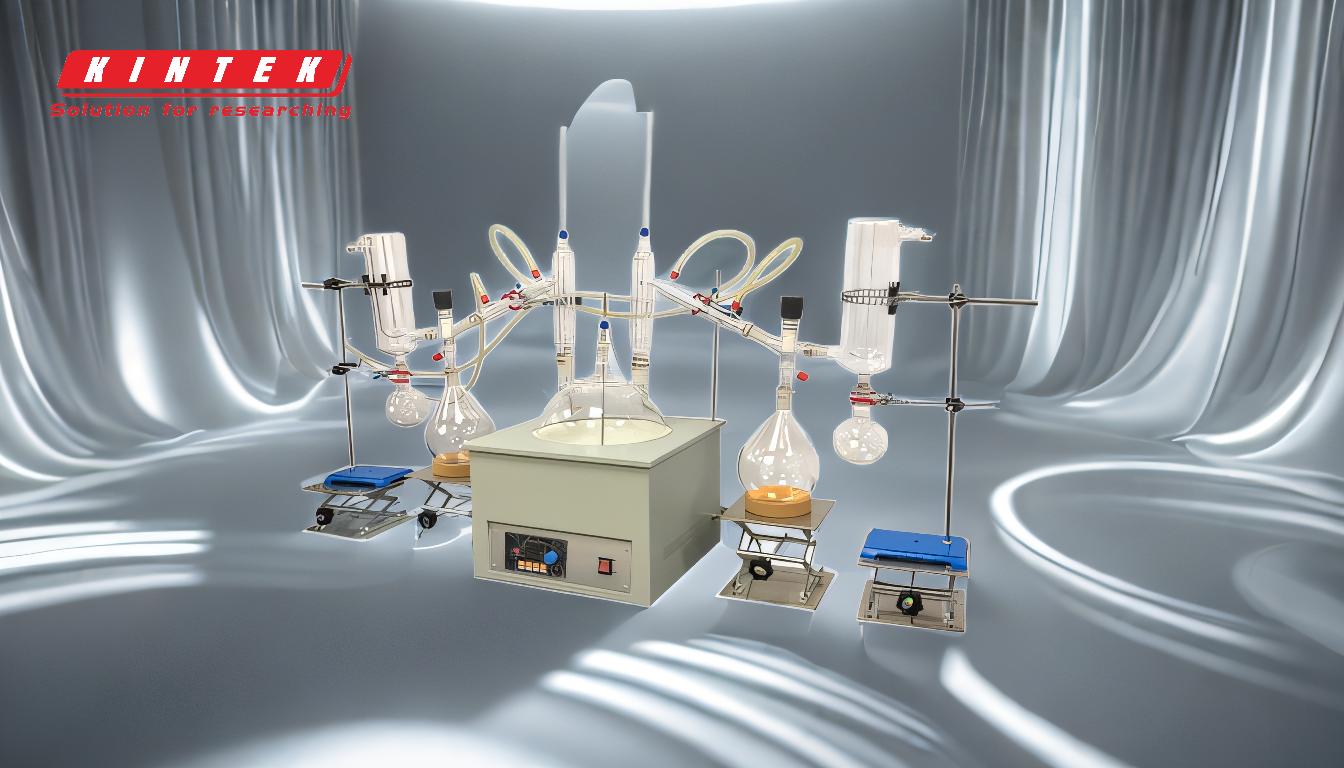Molecular distillation does indeed use heat as a critical component of the process. It is a specialized form of vacuum distillation that operates under extremely low pressures, typically below 0.01 torr (1.3 Pa). The process involves heating the material to create a thin liquid film, which then evaporates due to the applied heat. The evaporated molecules travel a short distance to a condensing surface, where they are collected as the final product. This method is particularly useful for separating and purifying thermally sensitive materials, as the low pressure and short travel distance minimize thermal degradation. The heat is applied through a heating jacket surrounding the vessel walls, ensuring controlled evaporation of the liquid film.
Key Points Explained:

-
Heat Application in Molecular Distillation:
- Molecular distillation relies on heat to evaporate the liquid mixture. The vessel walls are heated by a heating jacket, which transfers thermal energy to the material.
- The feed material flows down the heated walls and is spread into a thin film by PTFE wipers. This thin film ensures efficient heat transfer and uniform evaporation.
-
Formation of Liquid Film:
- The first step in molecular distillation is the formation of a liquid film on the heated surface. This film is critical for the evaporation process, as it maximizes the surface area exposed to heat.
- The wipers move at high speeds (approximately 3 m/s) to create a film velocity of about 5 m/s, ensuring rapid and even distribution of the material.
-
Evaporation and Condensation:
- The liquid film evaporates due to the heat applied, and the resulting vapor molecules travel a short distance to the condensing surface.
- The distance between the evaporation and condensing surfaces is designed to be less than the mean free path of the molecules, ensuring efficient separation and minimal thermal degradation.
-
Collection of Distillates and Residues:
- The evaporated molecules condense on the cooler condensing surface and are collected as the final product.
- The residue, which does not evaporate, is collected at the bottom of the vessel and can be recirculated for further distillation.
-
Low Pressure and Thermal Sensitivity:
- Molecular distillation operates under extremely low pressures (≈ 0.01 torr), which reduces the boiling points of the components and minimizes thermal stress on sensitive materials.
- This makes the process ideal for separating and purifying high molecular weight and thermally sensitive compounds, such as cannabinoids and natural products.
-
Safety Considerations:
- The process involves handling flammable materials under high vacuum, which poses explosion risks. Proper safety measures and equipment design are essential to mitigate these hazards.
-
Comparison to Short-Path Distillation:
- Molecular distillation is essentially the same as short-path distillation, both utilizing high vacuum and close proximity between heating and condensing surfaces.
- The key difference lies in the extremely low pressure used in molecular distillation, which enhances its suitability for thermally sensitive materials.
In summary, molecular distillation is a heat-driven process that operates under high vacuum conditions to separate and purify complex and thermally sensitive materials. The controlled application of heat, combined with the unique design of the equipment, ensures efficient separation while minimizing the risk of thermal degradation.
Summary Table:
| Key Aspect | Description |
|---|---|
| Heat Application | Heating jacket transfers thermal energy to create a thin liquid film for evaporation. |
| Liquid Film Formation | PTFE wipers spread feed material into a thin film for efficient heat transfer. |
| Evaporation & Condensation | Evaporated molecules travel a short distance to condense on a cooler surface. |
| Low Pressure | Operates below 0.01 torr to reduce boiling points and minimize thermal stress. |
| Safety Considerations | Requires proper safety measures to handle flammable materials under high vacuum. |
| Comparison to Short-Path | Similar to short-path distillation but uses lower pressure for sensitive materials. |
Discover how molecular distillation can optimize your purification process—contact us today!











